Best Books Everyone Should Read to Improve One's Skills (and to Impress His/ Her Boss)
A tell-tale sign of a good leader is a constant desire to learn, and
reading’s one of the best ways to show your higher-ups that you want to grow,
both within and outside of the organization. Not only that, it improves your
vocabulary, expands your world, and generally makes you a more educated and
interesting person to be around.
Read just one and you’ll find yourself ahead of the game. Read the
whole list and, well, you might just be looking at a promotion.
Rework: Change the Way You Work Forever
by David Heinemeier Hansson and Jason Fried
Although it’s been out a few years, Rework is still one of my
favorite business books for employees because it challenges traditional ideas
about “corporate America” and helps un-teach bad habits. You can’t be a good
leader unless you have good judgment. This is one of the best books I’ve read
for illustrating why it’s important to question established norms and work
smarter, not harder. Brittany
Hodak, ZinePak
“In typical 37
signals fashion, the wisdom in these pages is edgy yet simple straight forward,
and proven … Read this book multiple times to help give you the courage you
need to get out there and make something great.” Tony Hsieh, CEO, Zappos.com
“The brilliance of
Rework is that it inspire you to rethink everything you thought you knew about
strategy, customers, and getting things done” William C.Taylor, founding editor of Fast Company and Coauthor of Mavericks at Work.
“For me, Rework posed a new
challenge: stifling the urge to rip out each page and tape it to my wall …
Amazing, Powerful, Inspirational --- those adjectives might make me sound like a
fawning fan, but Rework is that useful. After you’ve finished it, be prepared for
a new feeling of clarity and motivation.” Kathy Sierra, cocreator
of the bestselling Head First series and founder of javaranch.com
“Inspirational … In a world where we
all keep getting asked to do more with less, the authors show us how to do less
and create more.” Scott Rosenberg,
cofounder of salon.com and author of Dreaming in Code and Say Everything.
“Leave your scared cows in the barn
and let 37signals’ unconventional wisdom and experience show you the way to
business success in the twenty first century. No MBA jargon or consultant speak
allowed. Just practical advice we can all use. Great stuff.” SaulKaplan, Chief catalyst, Business Innovation Factory.
“Appealingly intimate, as if you are
having coffee with the authors. Rework is not just smart and succinct but
grounded in the concreteness of doing rather than hard-to-apply philosophizing.
This book inspired me to trust myself in defying the status quo.” Penelope Trunk, author of Brazen
Careerist: The New Rules for Success.
“This book’s assumption is that an
organization is a piece of software. Editable. Malleable. Sharable. Fault
tolerant. Comfortable in Beta. Reworkable. The author live by the credo ‘keep
it simple, stupid’ and Rework possesses the same intelligence --- and
irreverence --- of that simple adage.” JohnMaeda, author of The Laws of Simplicity.
“Rework is like its authors: fast
moving, iconoclastic, and inspiring. It’s not just for starups, anyone who
works can learn from this.” Jessica Livingston,
partner, Y Combinator; author, founder at work.
8 Lessons in Military
Leadership for Entrepreneurs by Robert T.
Kiyosaki
As an Army veteran, I often think back to my very basic (but
priceless) leadership training I received as well as my transition to civilian
life. Kiyosaki, a former Marine and famous author (Rich Dad, Poor Dad), uses
his experiences to describe leadership, discipline, respect, and speed with
compelling stories and examples about how they can be applied to the business
world. —Tim
McHugh, Saddleback
Educational
This is book is written for anyone
who is an entrepreneur/ self-employer , or dreams of becoming an entrepreneur/ self-employer
on day.
This book is also for men and women
who are serving or who have served in the armed services because they have
already gone through a unique and rigorous educational process, a process that’s
essential for all entrepreneurs/ self-employer.
As you may know, nine out of 10 new business
fails within the first five years. Of the one in 10 that survives those first five
years, nine out of 10 of those ‘survivors’ fail in the second five years. The primary
reason why most new entrepreneurs fail is simply because they lack the core training,
the core strengths they need to withstand the rigors of being an entrepreneur. Some
people call it guts. Others call it perseverance. In the military training, it
might be put this way” ‘stand up, get off your butt, stop feeling sorry for
yourself, stop pouting, stop sucking your thumb, and get going again. You mama is
ashamed of you because your mama is tougher than you are.’ I think you get the
point here.
Another important reason of failure
of most entrepreneurs is because our educational system trains people to be
employees, not entrepreneurs/ self-employers.
Multipliers: How the Best
Leaders Make Everyone Smarter by Liz Wiseman
I was truly impressed with how thought-provoking this book was for
me. Wiseman does such a great job discussing the five key disciplines—my entire
team can really benefit from her wisdom. —Nicole Munoz, Start Ranking Now
If you want to become a better leader,
says Liz Wiseman,
you first have to discover whether you are ‘Multiplier’ or ‘Diminisher’ at
work. The former “are leaders who bring out intelligence on others and get the
best ideas and work out of the people they lead.” She says, while the latter “stifle
others and deplete the organization of crucial intelligence and capability.”
The distinction matters, she says, because
“research showed that managers (across a broad group of industries and across a
range of management levels) are getting only 66% of their employees’ capabilities
on average. There’s another 34% of intelligence waiting to be mined and put to
work on our most important opportunities and on our biggest challenges.”
Almost no one deliberately sets out
to dampen the performance of others, of course. As Wiseman says, “most
of Diminishers I have studied are really “accidental diminishers.” So we may
not be fully aware of it when we are negatively affecting others. “you might ask
yourself, how might I be shutting down smart, capable people with the very best
of intentions?” she advises, “try running your hypothesis by your colleagues and
see what they say.”
Indeed passionate leasers – the kind
prized by corporations on the move – “can easily become diminisher to others,” says
Wiseman, who the author of Multipliers:How the Best Leaders Make Everyone Smarter. they might think their
passion and energy is contagious, but actually they can turn others off because
they are always on. Or, they paint such a big vision that there is no need for
others to do the big thinking themselves. But, the answer is not for passionate
leaders to turn off. The best leaders know when it is time to be big and when
it is time to be small, so others can be big. They might go big with a big
question or a challenge, but then they hold back and let others fill in the
open space.”
So how you can ensure you are a force
for good in the workplace? Wiseman advises that as have to learn to think like
a Multiplier. For example, if we hold a subtle assumption that people won’t figure
it out without me, we will end up behaving like a Diminisher. But, when we shift
our thinking to ‘people are smart and will figure it out,’ the right Multiplier
behaviors tend to flow naturally.”
A big part of the shifting is asking
more questions. When a leader asks the questions, says Wiseman, they channel
the energy and intelligence of their team on the challenge at hand, and they
shift the burden of thinking onto others. To do this, one might take what I call
‘the extreme question challenge.’ Try leading a meeting or a conversation by
only asking questions. It might sound unnatural, but I find that it actually sparks
very natural and meaningful conversation and deep problem solving. It is s simply
exercise, but it will help the leader shift into Multiplier mode and out of
know-it-all mode. In other words, tell less, ask more, let others find answer.
The results, she says, can be
powerful: “we found in our research studying these two types of leaders that Diminishers
get less than half of the intelligence and capability of others (48%), while
Multiplier got 95%. That’s a 2X difference.
Doubling the efficacy of your
workforce is a powerful form multiplication. How are you working toward becoming
a Multiplier in your company? What techniques do you use? has been guided and
advised in this book.
The Power of Habit: Why We Do
What We Do in Life and Business by
Charles Duhigg
The Power of Habit’s an excellent primer on how habits are formed,
reinforced, and changed, whether at home or in the workplace. It made me
cognizant of my own habits and gave me a framework for making sense of (and in
some cases changing) them. In the workplace, I’m now much more sensitive to
organizational habits and I now understand the processes necessary to change
them. —Ben
Lyon, Kopo
Kopo, Inc.
The Habit loop is a neurological pattern that governs any habit. It consists
of three elements: a cue, a routine, and a reward. Understanding these
components can help in understanding how to change bad habits or form good
ones. The habit loop is always started with a cue, a trigger that transfers the
brain into a mode that automatically determines which habit to use. The heart
of the habit is a mental, emotional, or physical routine. Finally there is a
reward, which helps the brain determine if this particular loop is worth
remembering for the future. In an article in The New York Times, Duhigg
notes, "The cue and reward become neurologically intertwined until a sense
of craving emerges".
According to Duhigg, craving drives all habits and is essential in
starting a new habit, or destroying an old one. Duhigg describes how Procter and Gamble used research on the habit
loop and its connection to cravings to develop the market for Febreze, a
product that eliminates bad orders, to make a fortune.
The Golden rule of habit change helps stop addictive habits and
replace them with new ones. It states that if you keep the initial cue, replace
the routine, and keep the reward, change will eventually occur, although
individuals who do not believe in what they are doing will likely fall short of
the expectations and give up. Belief is a critical element of such a change,
though it can be structured in a number of ways including group settings. Often
people who join groups like accountability groups are better off than those who
act alone as individuals. Charles Duhigg used several examples to illustrate
his argument, including the case of Bill Wilson, a recovering alcoholic
whose newfound faith in Christ led him to create Alcoholics Anonymous. In the book, he also
discussed "willpower" and its role in creating a habit.
Ask by Ryan
Levesque
The way Levesque looks at things and explains how to ask better questions to find out what people really want is very useful. His system is for making more sales, but any employee wanting to be a better leader should improve their question-asking ability. Once you know what people don’t want and what they do want, you can better guide them. You’ll become the leader they want to follow. —Joshua Lee, StandOut Authority
The “Mind-Reading” System That Is Revolutionizing Online Business. Do you know how to find out what people really want to buy? Not what you think they want, not what they say they want, but what they really want?
The secret is asking the right questions - and the right questions are not what you might expect.
Ask is based on the compelling premise that you should NEVER have to guess what your prospects and customers are thinking. The Ask Formula revealed in this book has been used to help build multi-million dollar businesses in 23 different industries, generating over $100 million dollars in sales in the process.
You ‘ll discover why the Ask Formula is arguably THE most powerful way to discover EXACTLY what people want to buy and how to give it to them - and in a way that makes people fall in love with you and your company.
In this tell-all book, expert online marketer Ryan Levesque (featured in CNBC, Yahoo Finance, The Miami Herald, The San Francisco Chronicle, Mass Market Retailer, Bloomberg Business week and more) turns everything you know about customer surveys on its head.
You ‘ll discover how Ryan Levesque developed his proven system for creating survey-based, customized sales funnels. And you ‘ll also learn how YOU can implement the same system in your own business - no matter your market. The Ask Formula blueprint is laid out in clear and detailed steps for anyone to use and adapt.
Whether you ‘re an aspiring Internet entrepreneur, advanced online marketer, or established business owner, this book will both inspire you and show you how to skyrocket your online income - while creating a mass of raving fans in the process - simply by asking the right questions in a surprisingly different way. For people looking to scale up their business, Ask will utterly transform how you think about consumer behavior and selling online.
Traction: Get a Grip on Your
Business by Gino Wickman
This book lays out a specific way to operate a fast-growing, entrepreneurial
business that is scalable, yet easy to understand. It has given me a roadmap to
create success and have everyone in the organization operate at their highest
potential. It helps with focus, growth, and most importantly, enjoyment. —Jay
Johnson, Small
Lot MN
Don't let common problems run you and your business. Get a grip and
gain control with the Entrepreneurial Operating System (EOS). Inside Traction,
you’ll discover simple yet powerful ways to run your company with more focus,
growth and enjoyment. Based on years of real-world implementation, the EOS is a
practical method for achieving the business success you have always envisioned.
Traction: Get a Grip On Your Business is a business strategy book written by GinoWickman that guides leaders of entrepreneurial organizations on how to gain
control of their business through the Entrepreneurial Operating System. Traction,
published by BenBella Books in 2012, purports to outline a proven
and successful plan to increase businesses' efficiency and profits, with the
previously self-published version of the book selling 19,000 in just a few
years' time. In 2008, Traction won 2 Axiom Business Book Awards Bronze medals.
Traction has been listed in a "FinancialAdvisers' Must-Reads" list in The Wall Street Journal, "10-Books Business Owners Should Read" in The New York Times Online, and was recommended
by John B. Smith of Chief
Optimizer in a feature
on The Huffington Post.
Welcome to the Funnel: Proven
Tactics to Turn Your Social Media and Content Marketing up to 11
by Jason Miller
Miller has written a roadmap to modern content marketing. His book
informs, educates, and demonstrates the steps necessary to launch a successful
content marketing strategy for your business. —Chris Buehler, SCORCH
Raising brand awareness, building trust, establishing credibility,
and ultimately driving revenue, that’s what the top of the funnel is all about.
It can be a marketer’s “Paradise City”, but without focus, it can quickly
become overwhelming. The one-two punch of social media and content marketing is
a vital part of any successfully integrated marketing approach. If you are not
pairing these two powerhouses together then you are simply missing
opportunities to grow your business.
The tactics and strategies in this book have come together through a tremendous
amount of research, trial and error, expert input, and real world applications.
From startups to enterprise—what’s included here works across the board and can
very quickly make an impact.
Just like your favorite double album, this book is separated into four sides,
each one addressing a different aspect of Content and Social:
Content – Why marketers need to change their mentality from creating
more content, to more relevant content and three practical ways to create
content that delivers a face-melting return on investment.
Social – Using social to build awareness, trust and drive high quality
leads.
All Together Now – What the future holds for content and social and what
it means for marketers.
The Credits – The essential resources you need to stay on top of trends
in content and social media.
No frills, no fluff, just useful, practical tactics, strategies and lessons
from one modern marketer to another, with a touch or rock n roll flare.
Reality-Based Leadership:
Ditch the Drama, Restore Sanity to the Workplace, and Turn Excuses Into Results
by Cy Wakeman
Any time I feel like we’re spending too much time and energy on something
at work that doesn’t directly benefit our clients, I crack open Cy Wakeman’s
book again. It’s quick, tough love that cuts right to the chase. —Mary
Ellen Slayter, Reputation
Capital
Leadership Strategies Grounded In Reality And Focused On Results.
Recent polls show that 71% of workers think about quitting their jobs every
day. That number would be shocking-if people actually were quitting. Worse,
they go to work, punching time clocks and collecting pay checks, while
completely checked out emotionally. In Reality-Based Leadership, expert
Fast Company blogger Cy Wakeman reveals how to be the kind of leader who
changes the way people think about and perceive their circumstances-one who
deals with the facts, clarifies roles, gives clear and direct feedback, and
insists that everyone do the same-without drama or defensiveness. Filled with
dynamic examples, innovative tools, and diagnostic tests, this book shows you
how to become a Reality-Based Leader, revealing how to:
Uncover destructive thought patterns with yourself and others Diffuse drama and
lead the person in front of you Stop managing and start leading, empowering
others to focus on facts and think for themselves Equipped with a facts-based,
confident approach, you will free yourself from the frustrations you face at
work and transform yourself into a Reality-Based Leader, with the ability to
liberate and inspire others.
How Google Works
by Eric Schmidt and Jonathan Rosenberg
In How Google Works, Eric Schmidt and Jonathan Rosenberg illustrate
how to build a wildly successful company while maintaining a passionate and
authentic culture. Employees can learn a lot from the management decisions that
went into making Google the great company that it is today. —Joel
Holland, VideoBlocks
How Google Works is a book
co-written by Google's
Executive Chairman and ex-CEO Eric Schmidt and former SVP of Products Jonathan Rosenberg. The authors
explain how technology has shifted the balance of power from companies to
consumers and make the argument that the only way to succeed in this
ever-changing landscape is to create superior products and attract a new breed
of multifaceted employees, dubbed "smart creatives". The book is in English
and was published on 23 September 2014 by Grand Central Publishing, a division of Hachette Book Group. The hardcover
version is 304 pages in length. Covering various topics such as corporate
culture, strategy, talent, decision-making, communication, innovation, and
dealing with disruption, the authors illustrate management maxims with numerous
insider anecdotes from Google's history. It became a NewYork Times bestseller.
The Consolations of
Philosophy by Alain de Botton
This book opened my eyes to the value of philosophy and hardship.
The author devoted an entire section to Friedrich Nietzsche, who proposed we
look at difficulties in life and leadership like gardeners. At their roots,
plants can be exceptionally ugly and unwieldy, but someone with faith in their
potential and the right knowledge can cultivate them to bear beautiful flowers
and fruit. —Brian
David Crane, Caller
Smart Inc.
The critical reception for Consolations has been primarily
positive. It received glowing praise in, among other publications, The New York
Review of Books, The Times, The Spectator, The Sunday
Telegraph, The Sunday Times, The Irish Times, The Literary
Review, and The Mail on Sunday.
Humphrey Carpenter in TheSunday Times, (2 April 2000) said, "The Consolations of Philosophy
is certainly a commentary rather than a work of original thought; but few
discussions on the great philosophers can have been so entertaining. De Botton
takes us on a brisk, playful tour of the lives and ideas of half-a-dozen of the
big names in the history of philosophy."
According to Ben Rogers in the SundayTelegraph, "singling these thinkers out and grouping them together
is only the smaller part of de Botton’s achievement. He has also succeeded in
bringing each one to life. The lessons that he draws from his sages might, in
other hands, have appeared trite. But he writes with such charm and freshness
that he somehow avoids the pitfall."
Kirkus Reviews writes "Congenial, refreshing,
original—and mercifully succinct—de Botton may well achieve the impossible by
making philosophy popular."
Alison Lurie in New York Review of Books said,
"the simplicity of his writing is not the product of a simple mind."
A few critics have been negative. Edward Skidelsky of the New Statesman wrote: "Comforting, but meaningless. In seeking to popularise
philosophy, Alain de Botton has merely trivialised it, smoothing the discipline
into a series of silly sound bites. ... [De Botton's The Consolations of
Philosophy] is bad because the conception of philosophy that it promotes is
a decadent one, and can only mislead readers as to the true nature of the
discipline."
Jonathan Lear, writing in the New York Times
said: "Academic philosophy in the United States has virtually abandoned
the attempt to speak to the culture at large, but philosophy professors are
doing something of incredible importance: they are trying to get things right.
That is the thread that connects them back to Socrates -- even if they are not
willing to follow him into the marketplace -- and that is the thread that The
Consolations of Philosophy cuts. ...Let's face it, this isn't philosophy."
Start With Why: How Great
Leaders Inspire Everyone to Take Action by Simon
Sinek
Start With Why had a profound impact on me. I encourage everyone at
CoachUp, from managers to junior team members, to read it! The core philosophy
is that people and companies are most successful when initiatives are tied back
to core questions that we tend to ignore or forget on a daily basis: Why are we
doing this? What is our purpose? Why do I get out of bed to do this? —Jordan Fliegel, CoachUp, Inc.
Start With Why shows that the leaders
who’ve had the greatest influence in the world all think, act, and communicate
the same way — and it’s the opposite of what everyone else does. Sinek calls
this powerful idea The Golden Circle, and it provides a framework upon which
organizations can be built, movements can be led, and people can be inspired.
And it all starts with WHY.
Why do you do what you do?
Why are some people and organizations more innovative, more influential, and
more profitable than others? Why do some command greater loyalty from customers
and employees alike? Even among the successful, why are so few able to repeat
their success over and over?
People like Martin Luther King Jr., Steve Jobs, and the Wright Brothers might
have little in common, but they all started with why. It was their
natural ability to start with why that enabled them to inspire those around
them and to achieve remarkable things.
In studying the leaders who've had the greatest influence in the world, Simon
Sinek discovered that they all think, act, and communicate in the exact same
way—and it's the complete opposite of what everyone else does. Sinek calls this
powerful idea The Golden Circle, and it provides a framework upon which organizations
can be built, movements can be lead, and people can be inspired. And it all
starts with WHY.
Any organization can explain what it does; some can explain how
they do it; but very few can clearly articulate why. WHY is not money or
profit—those are always results. WHY does your organization exist? WHY does it
do the things it does? WHY do customers really buy from one company or another?
WHY are people loyal to some leaders, but not others?
Starting with WHY works in big business and small business, in the nonprofit
world and in politics. Those who start with WHY never manipulate, they inspire.
And the people who follow them don't do so because they have to; they follow
because they want to.
Drawing on a wide range of real-life stories, Sinek weaves together a clear
vision of what it truly takes to lead and inspire. This book is for anyone who
wants to inspire others or who wants to find someone to inspire them.
The Checklist Manifesto: How
to Get Things Right by Atul Gawande
As our business grows, it’s vital that the processes become
repeatable and new people can come in and get straight to work using best
practices. Running a service business is hard, but not uncommon. The Checklist
Manifesto uses mostly healthcare stories—literally life and death situations—to
explain how valuable process improvement and documentation is. It’s a quick
read and a quick game changer. —Robby Hill, HillSouth
We live in a world of great and increasing complexity, where even
the most expert professionals struggle to master the tasks they face. Longer
training, ever more advanced technologies—neither seems to prevent grievous
errors. But in a hopeful turn, acclaimed surgeon and writer Atul Gawande finds
a remedy in the humblest and simplest of techniques: the checklist. First
introduced decades ago by the U.S. Air Force, checklists have enabled pilots to
fly aircraft of mind-boggling sophistication. Now innovative checklists are
being adopted in hospitals around the world, helping doctors and nurses respond
to everything from flu epidemics to avalanches. Even in the immensely complex
world of surgery, a simple ninety-second variant has cut the rate of fatalities
by more than a third.
In riveting stories, Gawande takes us from Austria, where an emergency
checklist saved a drowning victim who had spent half an hour underwater, to
Michigan, where a cleanliness checklist in intensive care units virtually
eliminated a type of deadly hospital infection. He explains how checklists
actually work to prompt striking and immediate improvements. And he follows the
checklist revolution into fields well beyond medicine, from disaster response
to investment banking, skyscraper construction, and businesses of all kinds.
An intellectual adventure in which lives are lost and saved and one simple idea
makes a tremendous difference, The Checklist Manifesto is essential
reading for anyone working to get things right.

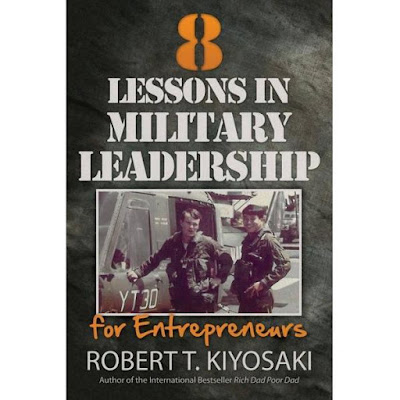

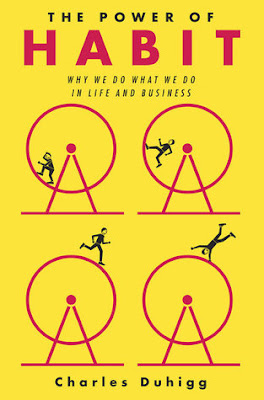

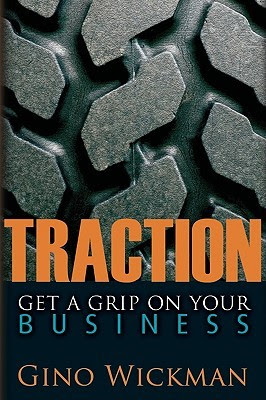
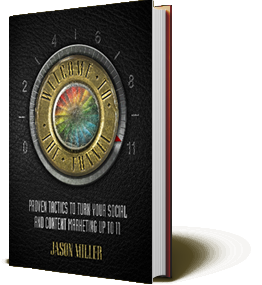



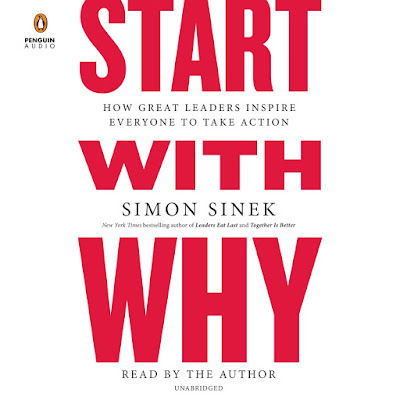







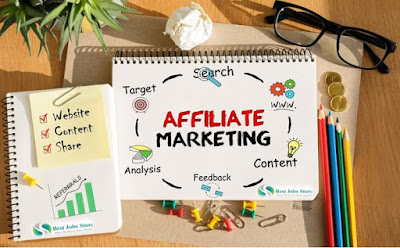

Comments
Post a Comment